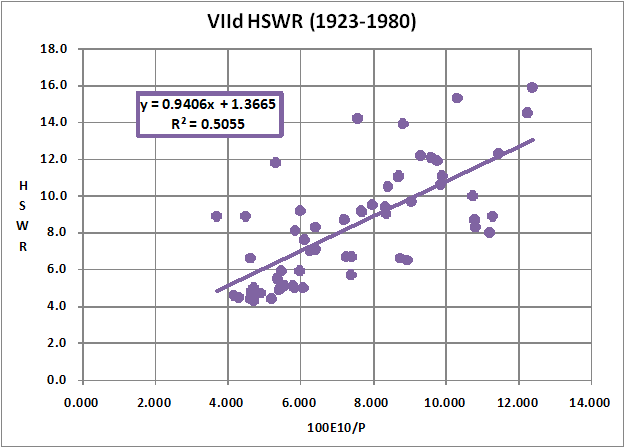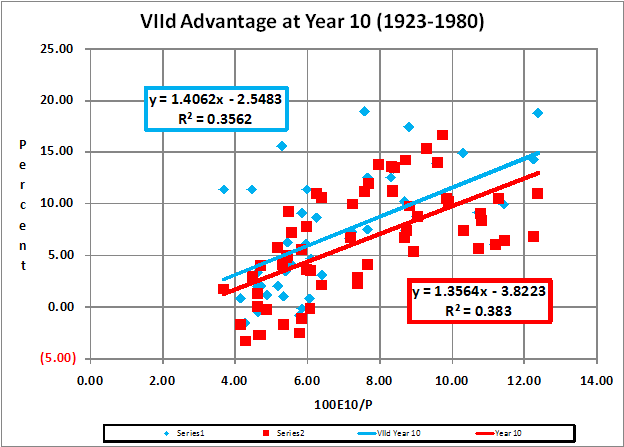|
Simple VII Sensitivity StudyValuation Informed Indexing offers a tremendous advantage over buy and hold. Here is a sensitivity study. It shows what happens to a simple variant. This time, I used a Bear Market exit point of P/E10=15 instead of 10. The CalculatorI built a calculator to test the advantage of staying out of stocks whenever P/E10=20 and above. I kept the investor out of stocks until P/E10 fell below 15 instead of 10. That is, I froze the allocation during long lasting (secular) Bear Markets. I did this by modifying the P/E10 data in the Deluxe V1.1A08a calculator. Simple Valuation Informed Indexing ResultsI set the calculator to withdraw a fixed percentage of the original balance (plus adjustments to match inflation). I determined 30-year Historical Surviving Withdrawal Rates. That is, I determined the withdrawal rates at which a portfolio would have a positive balance at Year 30 but not in Year 31. I did not assume any expenses. 
Simple VIId Stock ReturnsThis shows the Year 10 real, annualized, total returns of stocks using Simple Valuation Informed Indexing variant VIId. I have compared it with an all-stock portfolio. 
ObservationsVIId supports a 30-year Safe Withdrawal Rate of 5.0% (plus inflation) at today’s valuations (P/E10=17 and 100E10/P=6.0%). This compares with 4.5% with an 80% stock fixed allocation [Year 30 SWR button on left]. |